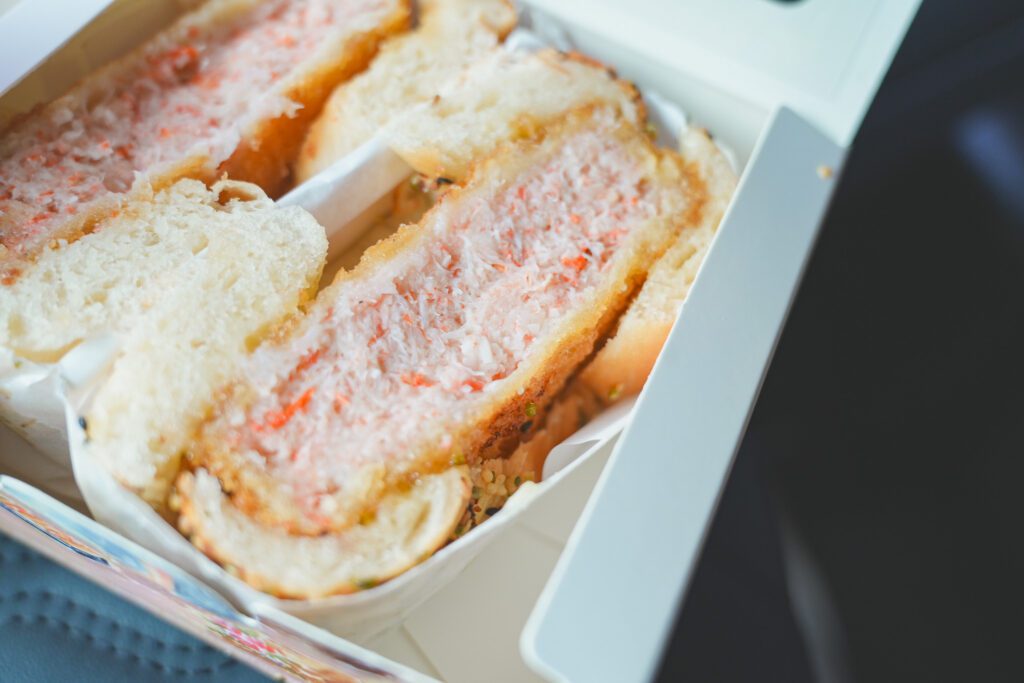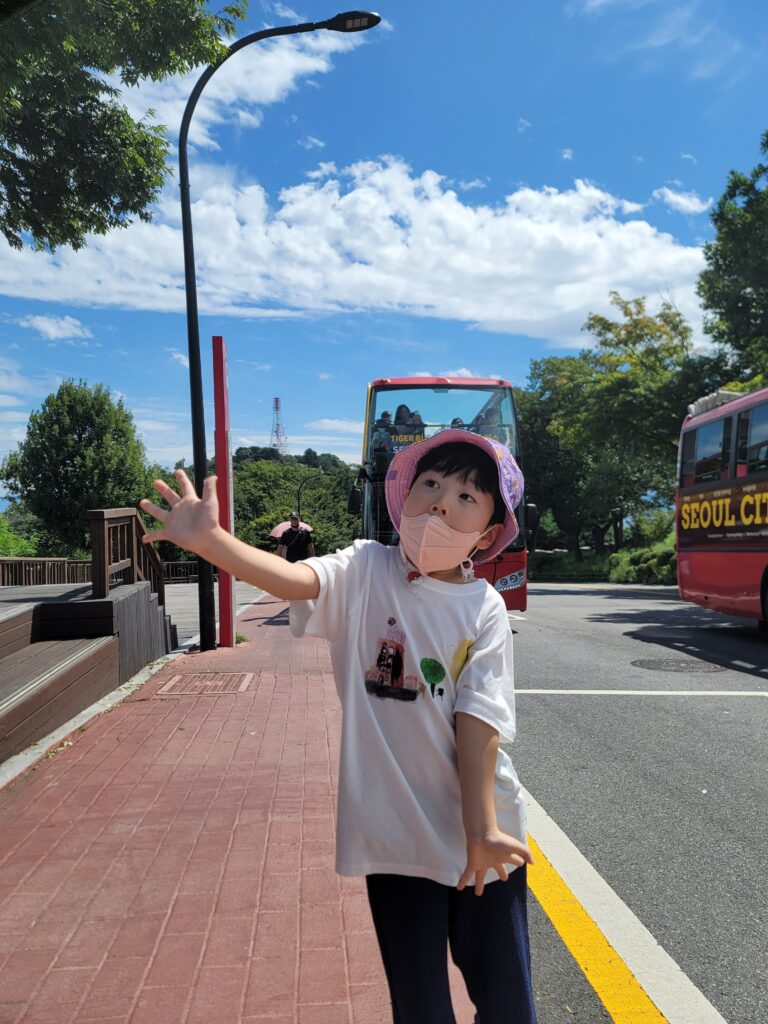Contents
Psychological healing programs, relaxation gardens
The Seoul Botanic Garden’s Closed Garden Program is one of the programs offered by the Seoul Metropolitan Government to its citizens. Reservations must be made by 5 p.m. two days before the scheduled visit. There are only 5 groups at a time, and it’s a first-come, first-served program, so you’ll have to reserve in advance or find a canceled spot. The fee is 10,000 won per family, but it’s worth it because you can talk about various topics with your family and take home plants.
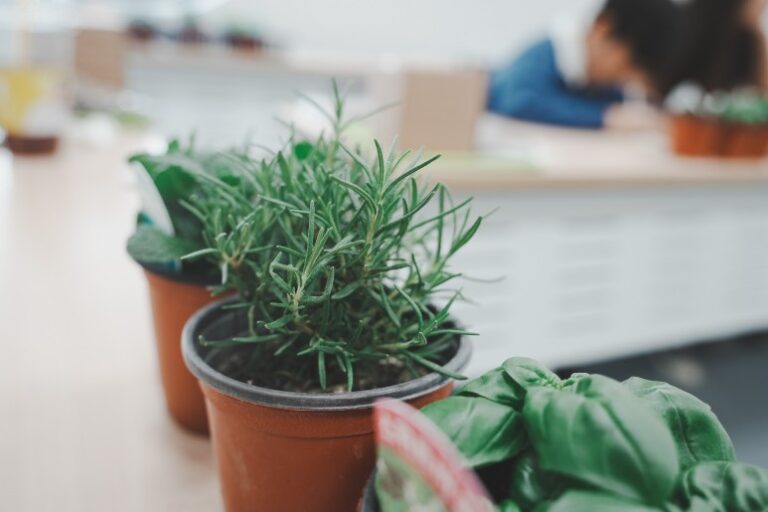
On the day we participated, there were four families. There is only one teacher to help facilitate the program, but she was so good at it that it was like a 1:1 program.
The programs run by the Seoul Botanic Garden change every month, but the family program Hyeojungwon, which includes children, continues to be held on weekends. The theme of the day we participated was ‘herb’ planting, and the theme changes slightly every month.
Each family is only given one pot, so if you have more than one child, it’s a good idea to sign up in teams of two. It’s also a good idea to bring an eco-bag or paper bag to carry your plant afterwards.
Seoul Botanic Garden Parking Information
Parking is the biggest concern for dads, and it’s not easy to find a parking spot here at the Seoul Botanical Garden. According to the parking map, there are only 200 cars on the first and second floors of the botanical culture center.
If it’s not in the morning, the line to get in can be very long, so you should consider that. We went in the afternoon just in time, but we were late. Instead of parking here, you might want to try Yusuji temporary parking lot (200 spaces), Magokle Sports Center parking lot (130 spaces), or Magok Square underground parking lot (120 spaces). The Seoul Botanical Garden is also huge, and it will take you almost a full day to explore it, so you may want to use the app to find and purchase a one-day parking pass.

I dropped off only my son and wife at the entrance and parked far away.
The building that looks like this in the Seoul Botanical Garden is the Plant Culture Center. I came to the botanical garden once last time, but this time I didn’t know where the Plant Culture Center was, so I looked for a while. After entering the building, you can go up to the second floor. The class was held in a room called the Bunflower Tree Room.
25 emotions I went through in a week,
Class has started. The teacher hands out a sheet of paper and asks us to write down all the emotions we’ve felt in the past week. I think there are about 25 blanks, but it’s not as easy as I thought it would be. I probably felt a lot of different emotions, but it’s not easy to think of specific situations. The teacher breaks down the types of emotions and gives specific examples, because many people can’t fill in 25 blanks.
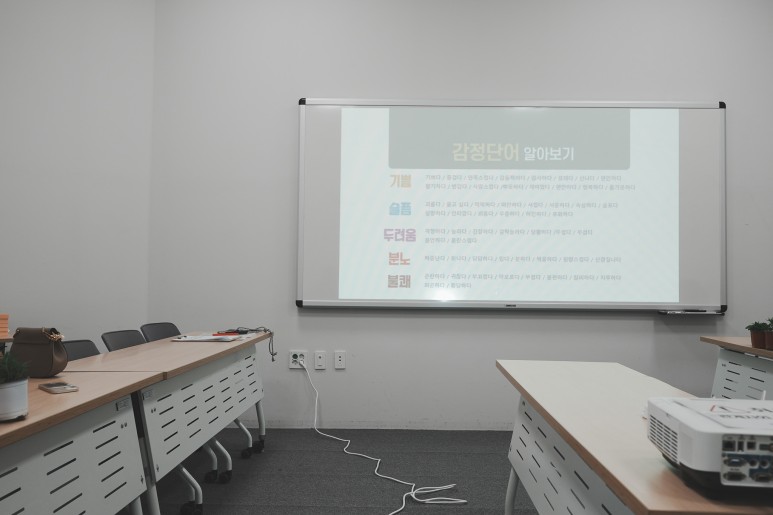
Once you’ve filled in all the blanks, you’ll have a conversation with your family about why you’re feeling the way you are. I usually make an effort to talk to my kids, but I don’t usually talk to my wife about how I’m feeling, so it was nice to be able to be honest with each other. I was surprised at how much she was able to tell me about different situations and emotions.
Garden Healing Program
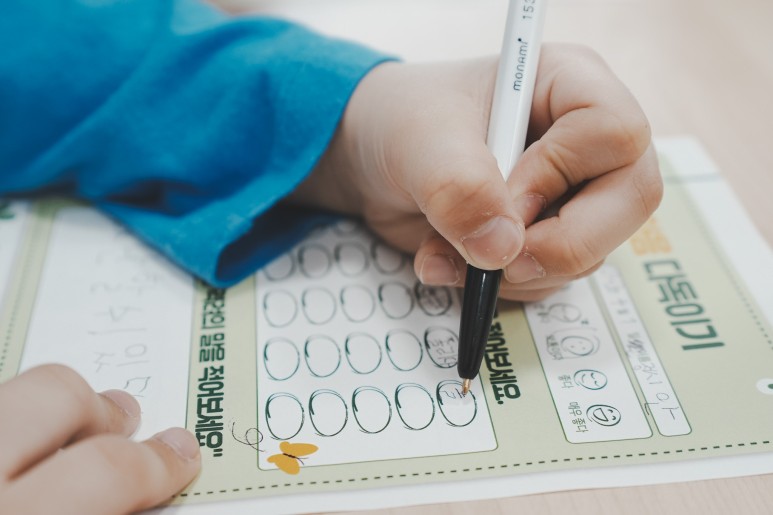
What struck me was that the teacher asked the child if she was subtly encouraging him to write only positive emotions. I kept asking her, “Wasn’t it nice when this happened? How did you feel when this happened?
The teacher said
It’s healthy to be able to express both positive and negative emotions, and to do so without lying.
She had about 10 positive words, I think she had about six or seven neutral words, and I think she had about seven or eight negative words, and I was like, “Oh, that’s a lot of negative words.” I was like, “Oh, that’s more than I thought.
My wife had 11 positive words and I had 12 positive words. You could interpret that as my mom and dad adding more positive thoughts, but I also wondered if we were being disingenuous, because we always want to emphasize that we’re a happy family on the show.
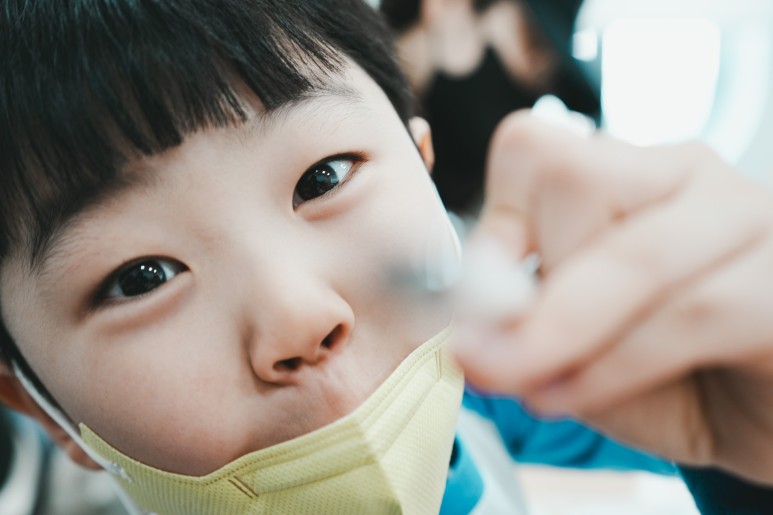
Next, I worked with my child to draw facial expressions on 3 cards. I asked them to pick 3 of the negative words they had written earlier and draw what they would have looked like when they felt that way.
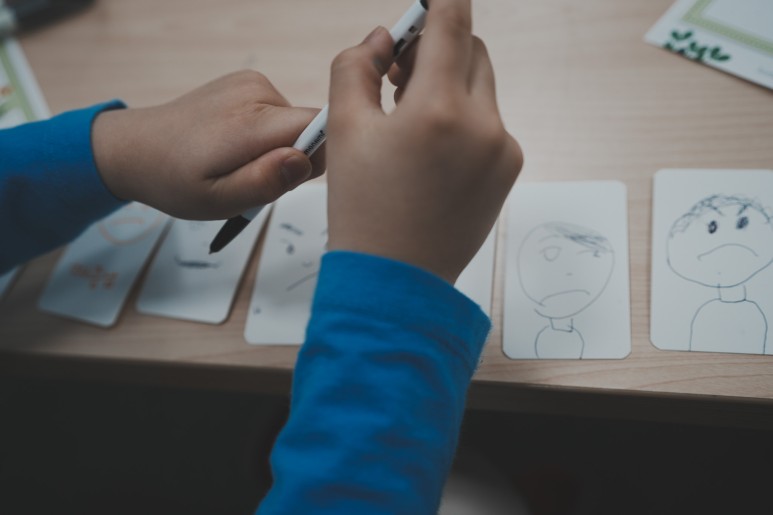
Do you see the different facial expressions your son has drawn? He probably learned his facial expressions from watching my wife and I, rather than from seeing his own face, and I thought that since he drew our facial expressions, we must have been like this.
I realized that my wife and I must have worn a lot of different faces over the course of the week, and I smiled and reflected.
테이블과 더 안쪽 침실 공간을 구분짓는 수납장도 재미있습니다. 도록도록에서 이 장은 일종의 인포메이션 데스크 역할을 하고 있는데요. 처음 숙소에 들어서면 이곳에 주인장이 써주신 #손엽서 와 마주하게 됩니다. 왠지 따뜻한 기분이 들죠. 그리고 숙소 사용설명서와 몇몇 인상 깊은 아이템들이 있어요.
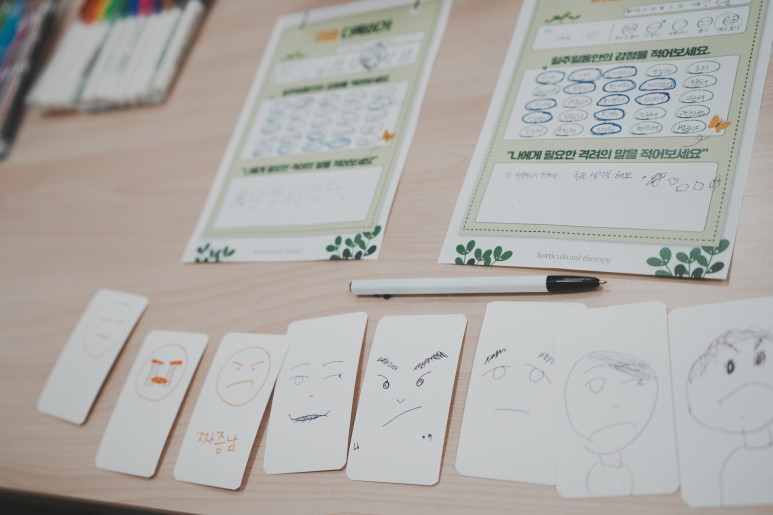
Based on these face cards, the family can have conversations with each other. For example, OO can tell me when he made this face, what was he feeling, why did he make that face, and so on. He talked about how he gets “angry” when his mom and dad don’t let him do things he wants to do, and he chose a card with an open-mouthed expression.
Next time, they’ll line up the pre-made encouragement cards and choose one thing they’d like to hear from each other.
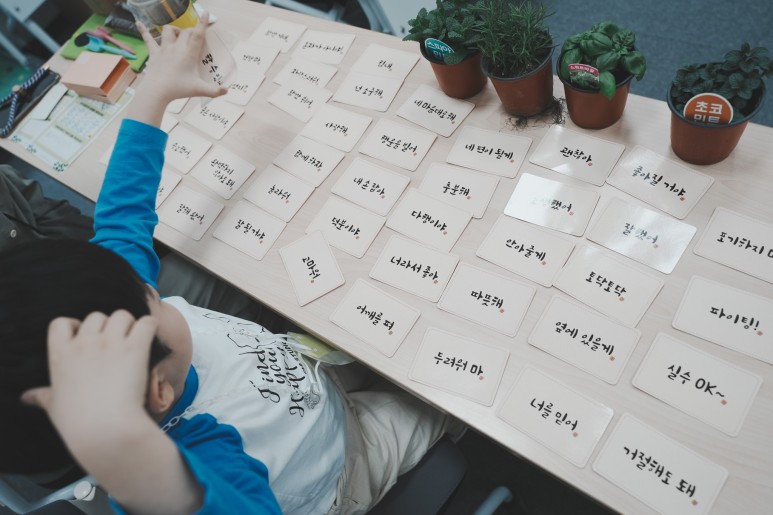
I didn’t realize there were so many encouragement cards, but there are so many different good words. I realize that our language has so many different good words and phrases.
My child chose “You’re not alone” and “You can do it,” my wife chose “I’ll be there for you,” and I chose “Let’s do it together. We were supposed to pick one per person, but she was torn between two encouragement cards, so I told her to pick both.
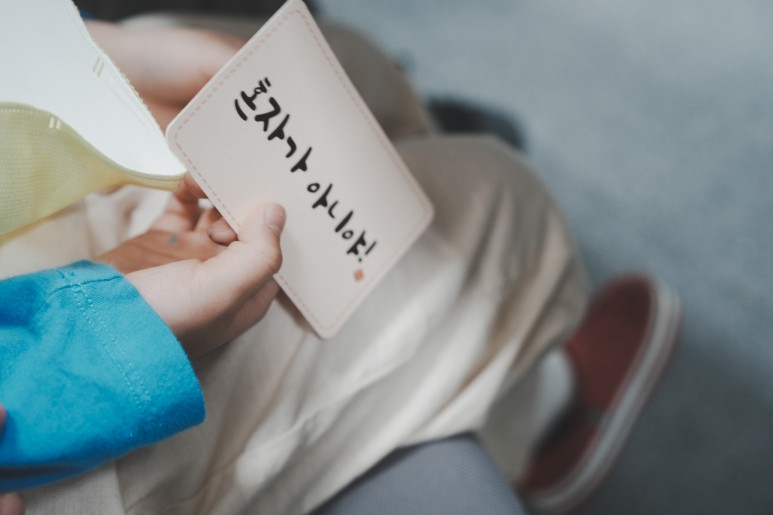
Then, one by one, people get up and say “why they wanted to hear this story,” and after they’ve said it, everyone else shouts it out in unison.
OO ah “You’re not alone” and we all shout it out together. The funny thing is that the younger kids all seemed to be a little bit stressed about being scolded. As they got older, the elementary kids seemed to be unhappy with the things that were restraining them. One friend who is in fourth grade picked “let me take a break.
Planting time for herbs
Finally, we planted our plants. The theme for the month we participated in was herbs. The teacher introduced what herbs are and invited the children to touch and smell the pots in front of them. There were four different types of herbs and each had a unique scent, so the children were excited to smell them and decide which one to plant.
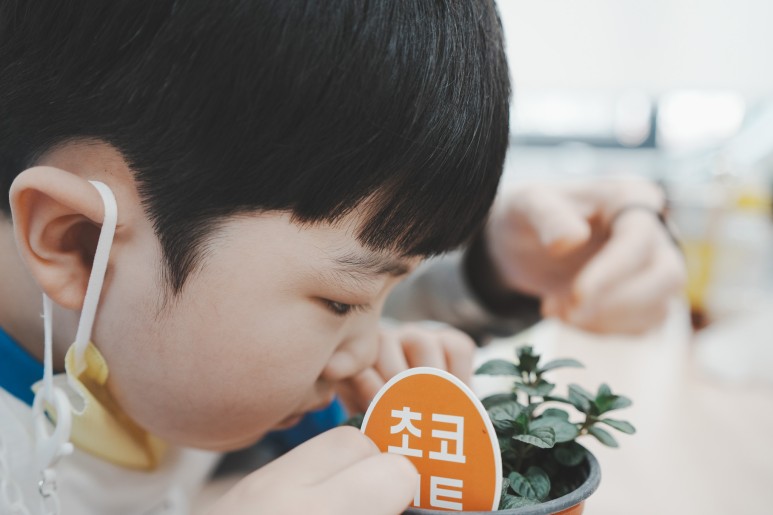
We chose spearmint, and all you have to do is remove the plant from its seedling, transfer it to a sturdy pot, and pack down the soil to finish it off. At other venues, I’ve had plants die after I got home because I didn’t pack the soil down properly, but here, they were very careful to show me how to pack the soil down to the corners and keep it airy.
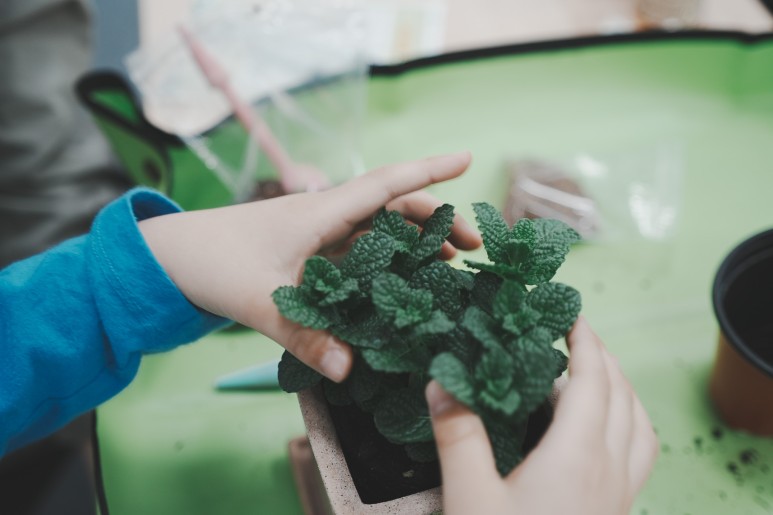
We transferred the herbs to the pots and gave them a good finish, and then we planted them.
At first, I thought it was just a planting and bringing home program, but after sharing the stories of the week with my family and talking about our feelings, I felt that even the little herbs felt special.
My child felt the same way, so she nicknamed her herb friend ‘french fries’, which is her favorite name, and even though it doesn’t sound right to call a plant fries, it means something because she likes it.
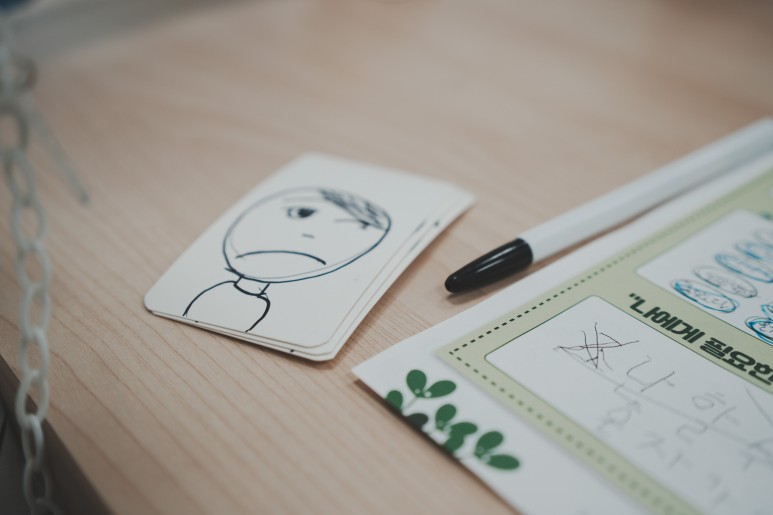
Phytotherapy for Adults
In addition to the program we participated in, there is also plant psychotherapy for adults. In addition to family programs, Hue Garden often holds psychotherapy programs for adults, so I recommend looking for them on the Seoul Public Reservation Service.
After participating in the family program, I was interested in the adult program as well.
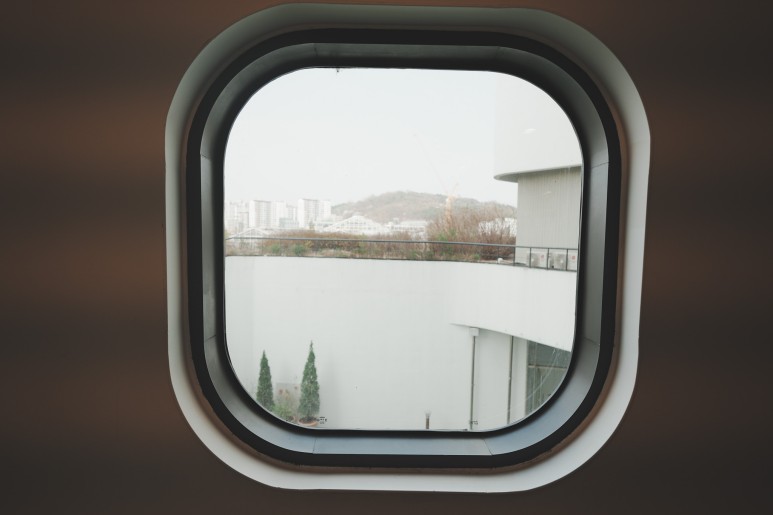
If you’re hungry after class here, you can go up to the fourth floor of this building and there’s a cafeteria. It’s a big space and there were a lot of kids, so I think we were able to eat comfortably. Just for your information.
Stroll through Seoul Botanical Garden
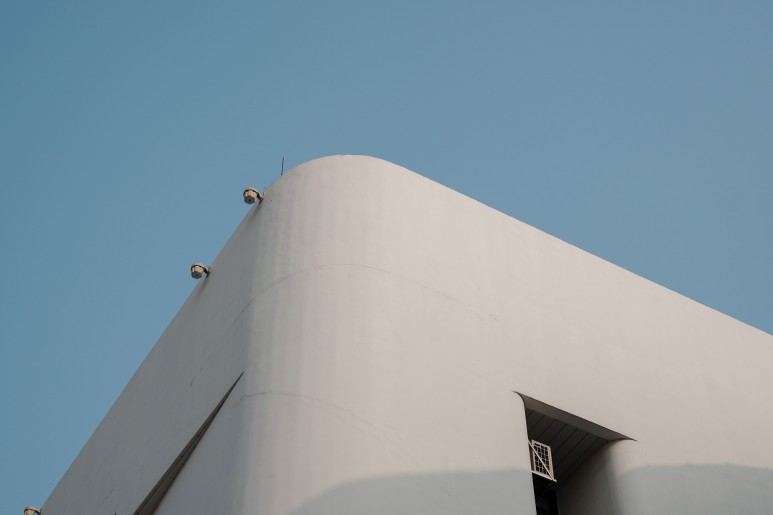
After class, I recommend visiting the Seoul Botanical Garden. The indoor botanical garden is nice, but I love the outside, and I don’t think I’ve ever gotten tired of Seoul Botanical Garden.
There are a lot of people inside the botanical garden, but it’s relaxing in the park. It’s a big park connected to the Han River, and it’s connected to all parts of Magok district. Last time I walked around the big lawn, but today I walked around the lake park.
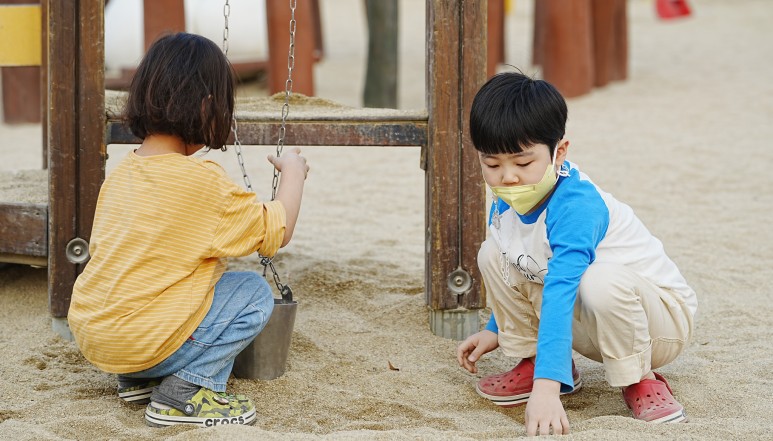
This is a playground near the Courtyard Marriott towards Magoknaru Station. It’s in front of the LG Arts Center after you walk around the lake from the botanical garden. The park itself has a lot of grass, so you can easily spread out a mat on the grass, and children often play in places like this playground.
